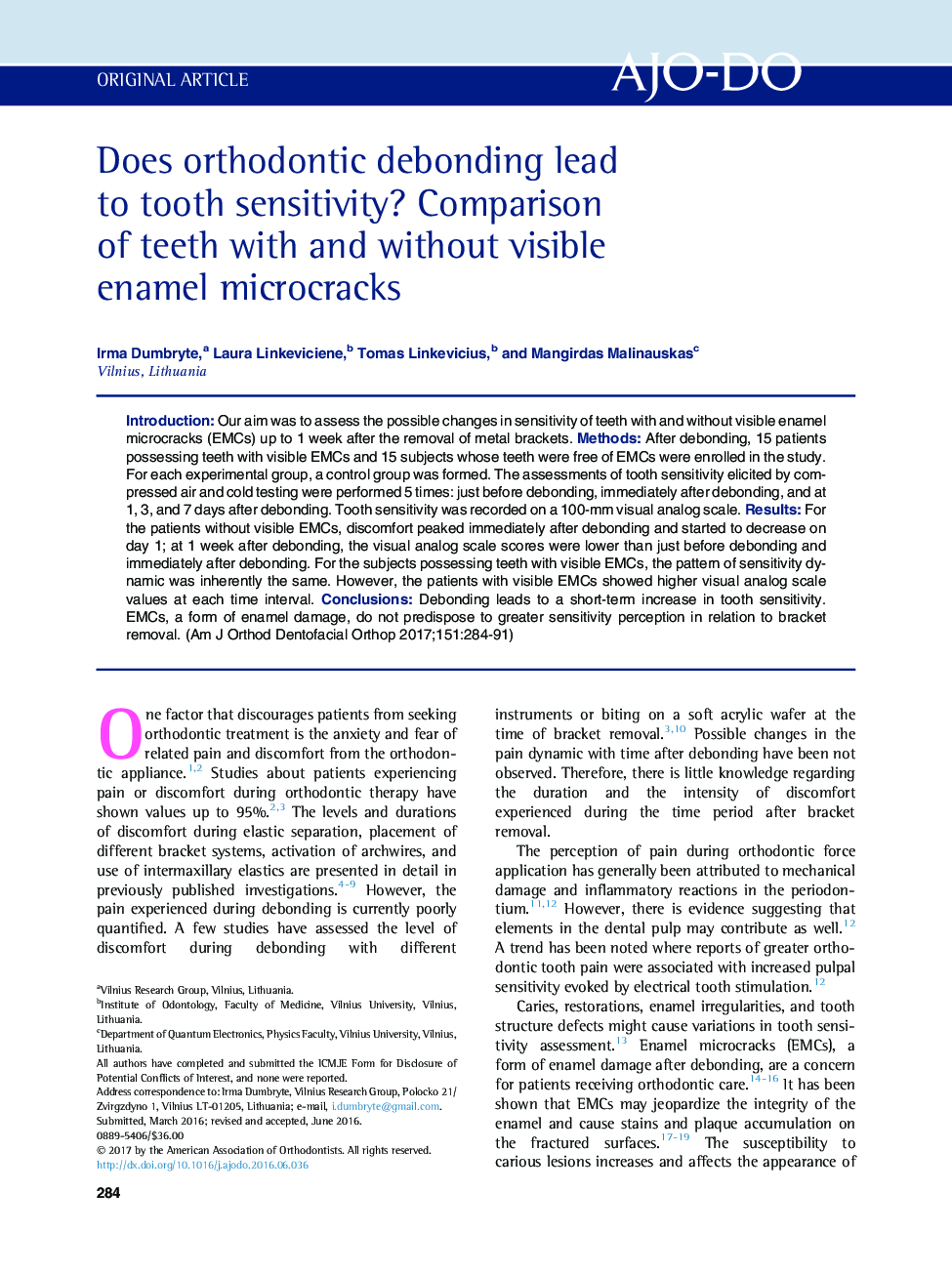| Article ID | Journal | Published Year | Pages | File Type |
|---|---|---|---|---|
| 5637563 | American Journal of Orthodontics and Dentofacial Orthopedics | 2017 | 8 Pages |
â¢Tooth sensitivity was evaluated up to 1 week after removal of metal brackets.â¢Discomfort of teeth with and without visible enamel microcracks was assessed.â¢Debonding led to a short-term (7 days) increase in tooth sensitivity.â¢Patients with visible enamel microcracks showed higher absolute discomfort values.â¢The pattern of sensitivity is inherently the same for all subjects.
IntroductionOur aim was to assess the possible changes in sensitivity of teeth with and without visible enamel microcracks (EMCs) up to 1Â week after the removal of metal brackets.MethodsAfter debonding, 15 patients possessing teeth with visible EMCs and 15 subjects whose teeth were free of EMCs were enrolled in the study. For each experimental group, a control group was formed. The assessments of tooth sensitivity elicited by compressed air and cold testing were performed 5 times: just before debonding, immediately after debonding, and at 1, 3, and 7Â days after debonding. Tooth sensitivity was recorded on a 100-mm visual analog scale.ResultsFor the patients without visible EMCs, discomfort peaked immediately after debonding and started to decrease on day 1; at 1Â week after debonding, the visual analog scale scores were lower than just before debonding and immediately after debonding. For the subjects possessing teeth with visible EMCs, the pattern of sensitivity dynamic was inherently the same. However, the patients with visible EMCs showed higher visual analog scale values at each time interval.ConclusionsDebonding leads to a short-term increase in tooth sensitivity. EMCs, a form of enamel damage, do not predispose to greater sensitivity perception in relation to bracket removal.
